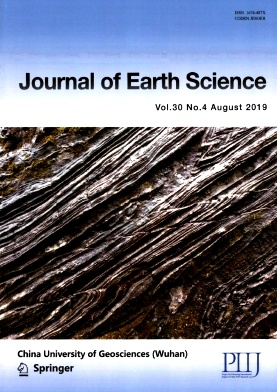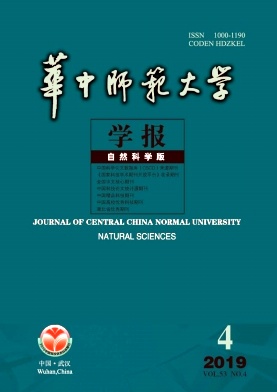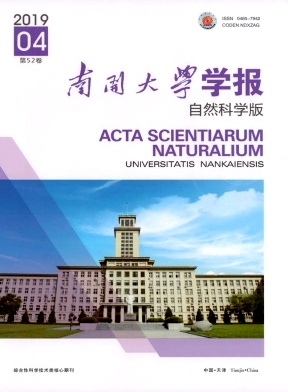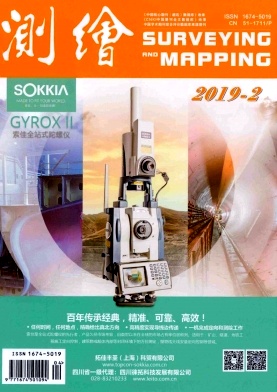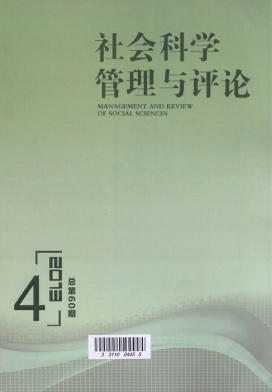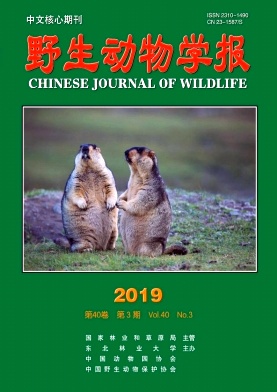《Journal of Earth Science》创刊于1990年10月, 是由教育部主管、中国地质大学主办的综合性地学学术理论期刊。
《Journal of Earth Science》坚持党的基本路线,提倡“双百”方针,报道地学顶尖科研成果,交流地学创新学术思想, 实现“科教兴国” 和科技期刊“可持续性发展”战略。
《Journal of Earth Science》的办刊宗旨是以反映中国地质大学教学与科研创新的、高水平的基础地质、应用地质及资源与环境地质科研成果为主要任务,以促进国内外地学学术交流、繁荣我国地质教育、地质科技与地质找矿事业,为我国社会主义四化建设服务为目的。
《Journal of Earth Science》刊登内容主要包括:地层、古生物、岩石、矿物、构造、地球化学、应用地球物理、矿床地质、能源地质、找矿勘探、水文地质与工程地质、环境地质、灾害地质、探矿工程、数学地质与遥感地质、应用地球物理, 信息工程等新理论、新技术、新方法及地学领域的边缘、前沿学科的创新的、高水平的学术论文。
《Journal of Earth Science》自创刊以来, 得到众多国内外地学及相关领域专家教授的高度赞誉。 特别是三本英文专辑在第三十届国际地质大会上交流后,许多学者认为该学报英文版反映了中国地学研究的水平, 其内的许多论文达到国际先进水平。
目前, Journal of Earth Science与国际上100个国家地区的出版机构和学术团体建立了长期的订购和赠阅交换关系。该刊曾荣获“北京市科技期刊评比全优奖”, 被国际著名检索系统《化学文摘》(CA)、日本《科学技术文献速报》(CBST)、俄罗斯《文摘杂志》(PЖ)、《GeoRef》(美国地质科学光盘数据库)等以及国内多种文摘期刊收录。 为学校“211”工程建设与发展发挥了重要的作用。
说明:该杂志未出现在最新新闻出版总署目录内,本站仅做历史信息展示,不提供任何服务。
剑桥科学文摘、上海图书馆馆藏、CA 化学文摘(美)、SCI 科学引文索引(美)、知网收录(中)、哥白尼索引(波兰)、Pж(AJ) 文摘杂志(俄)、国际中英文、维普收录(中)、万方收录(中)、文摘杂志、国家图书馆馆藏、文摘与引文数据库、CSCD 中国科学引文数据库来源期刊(含扩展版)
中国期刊全文数据库(CJFD)、中国核心期刊遴选数据库
地层、古生物、岩石、矿物、构造、地球化学、应用地球物理、矿床地质、能源地质、找矿勘探、水文地质与工程地质、环境地质、灾害地质、探矿工程、数学地质与遥感地质、应用地球物理
声明:
①本页面非期刊官网,不以期刊名义对外征稿,仅展示期刊信息当做参考资料.如果您要投稿、要查稿,请移步至期刊官网.
②如果您是期刊负责人且不想本平台展示期刊信息,可联系在线人员予以删除.
③如果需要期刊学术咨询服务可以联系学术顾问:服务详情
1.Manuscripts are to be written in English and double spaced. The original and two copies of the manuscripts together with the originals and two sets of copies of the figures should be submitted for review purpose. Papers are not to exceed 8 000 words nor to contain more than 7 figures and tables. Large figures and tables should be avoided, and their widths should generally be either 8.0, 16.5 or 24.0 cm. Each illustration should be clearly drawn and lettered.
2.The SI units of metric system should be used.
3.State secrets are not to be released. Authors take full responsibility for their papers.
4.We accept only unpublished, original papers and claim first right of publication. Papers unsuitable for our publication will be returned promptly.
5.Manuscripts should be organized in following order: (a) Title; (b) Name(s) and affiliation(s) of author(s); (c) Abstract (no more than 200 words) and key words (no more than 6); (d) Introduction; (e) Methods, techniques, studied material and area descriptions; (f) Results; (g) Discussion; (h) Conclusions; (i) Acknowledgments; (j) Explanation of plate; (k) References cited; (l) Tables; (m) Figure captions.
Headings
The following sequence should be used:
a.Free-standing capitals, bold, at the margin
b.Free-standing lower-case, bold, at the margin
If a further subdivision is needed, 1, 2, 3, etc., or (1), (2), (3), etc., or a, b, c, etc., should be used.
References Cited
All references cited to publications made in the text should be presented in a list of references following after the text. The manuscript should be carefully checked to ensure that the spelling of authors’ names and publication dates are exactly the
same in the text as in the reference list.
If reference is made in the text to publications written by more than two authors, the name of the first author should be given, followed by “et al.”. This indication, however, should never be used in the list of references. In this list, names of the first three co-authors followed by “et al.” should be given.
References in the text should be arranged chronologically. The list of references should be arranged alphabetically by authors’ names and chronologically per author.
The following system should be used for arranging references.1.For periodicals
Chough, S. K., Barg, E., 1987. Tectonic History of Ulleung Basin Margin, East Sea (Sea of Japan). Geology, 15(1): 45–58
2.For books
Shrock, R. R., 1948. Sequence in Layered Rocks. McGraw-Hill, New York. 507
3.For multi-author books
Sun, S. S., 1984. Geochemical Characteristics of Archean Ultramafic and Mafic Volcanic Rocks: Implication and Evolution. In: Kroner, A., Lansor, G. N., Goodwin, A. M., eds., Archean Geochemistry. Springer-Verlag, Berlin. 25–46
4.For edited symposia, special issues, etc., published in a periodical
Fox, P. J., Ruddiman, W. F., Ryan, W. B. F., et al., 1971. The Geology of the Caribbean Crust, I. Beata Ridge. In: Heezen, B. C., Kosminskaya, I. P., eds., The Structure of the Crust and Mantle beneath Inland and Marginal Seas.
Tectonophysics, 10: 495–513
Periodical names should be given in full or abbreviated using the International List of Periodical Title Word Abbreviations. In addition, in referring to a personal communication the two words are followed by the year, e.g. “(MeNary, J., personal communication, 1968)”.
Footnotes
Footnotes should only be used if absolutely essential. If possible the information should be corporated in the normal text. If used, footnotes should be indicated by asterisks and kept as short as possible. If references are given in footnotes, full bibliographic data must be given in the list of references, not in the footnote.
All manuscripts should be governed by above information. Otherwise, publication of articles can be seriously delayed because of corrections.
-
当您需要提升文稿内容质量时
我们提供以下服务英文润色
学术翻译
论文查重报告
内容评估报告
论文初审服务
文献检索
-
当您需要论文初投协助时
我们提供以下服务期刊推荐
字数缩减
格式排版
图片优化
投稿信指导
投稿协助
-
当您需要投稿后续支持时
我们提供以下服务多轮润色(365天内)
回复信审查
多次翻译润色
拒稿支持
拒稿重投
-
当您需要扩大科研影响力时
我们提供以下服务图文摘要
简明摘要
期刊封面图设计
图像优化
表格优化
科研插图制作
